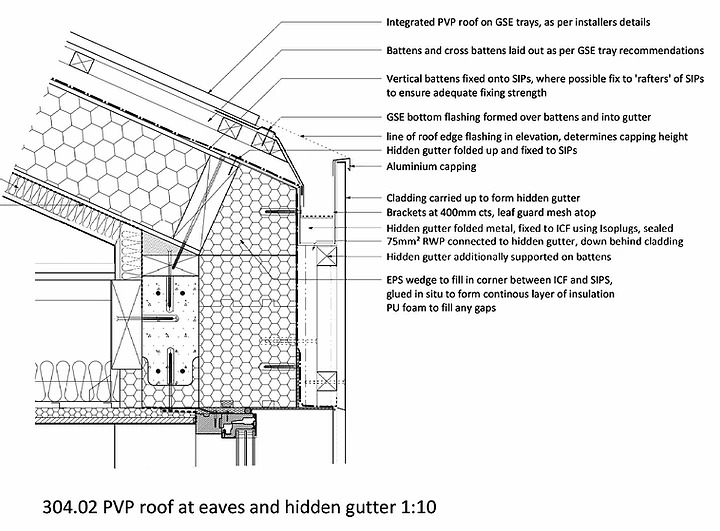
Our clients were planning to construct a new home and were interested in achieving a high quality build that will be ‘Future Proof’. Stickland Wright worked closely with them to develop and test the initial design to ensure that responds sensitively to their brief whilst achieving the PassivHaus benchmarks. A key part of this process was modelling the proposals on the PHPP (PassivHaus Planning Package) software in order to analyse in detail the thermal performance and energy efficiency of the scheme.
The situation of the site made benefiting from passive solar design especially challenging as the site sloped to the NorthWest and was largely overshadowed to the south in the Winter. An ideal site for a PassivHaus is a south facing slope or open site with potential to maximise winter solar gains whilst shading against summer solar gains which presents the risk for overheating.
In achieving these stringent standards it is vital that the PHPP assessment is carried out at an early stage, pre-planning, to inform the overall form and volume of the building.
Working alongside the PassivHaus Certifier, WARM Consultants, the detailed design and specification was developed with Key PassivHaus principles in mind. Some core facets of this include designing for airtightness, reducing the heat loss through thermal bridging and the integration of the mechanical ventilation and heat recovery unit (MVHR). The MVHR system is a key component of a PassivHaus as it allows heat to be transferred from extracted ‘stale’ air to the incoming fresh air that the system then evenly distributes throughout the property. Further innovative technologies include an extensive 13.20 kWp Solar Photovoltaic Roof (Solar PV) and air source heat pump (ASHP), Ecocent hot water cylinder.
Following a thorough tender process, compilation of all detailed information and PassivHaus criteria checklists the PassivHaus Certifier was satisfied that the design would achieve the stringent targets and could become a certified PassivHaus to the delight of the client, contractor and consultant team.